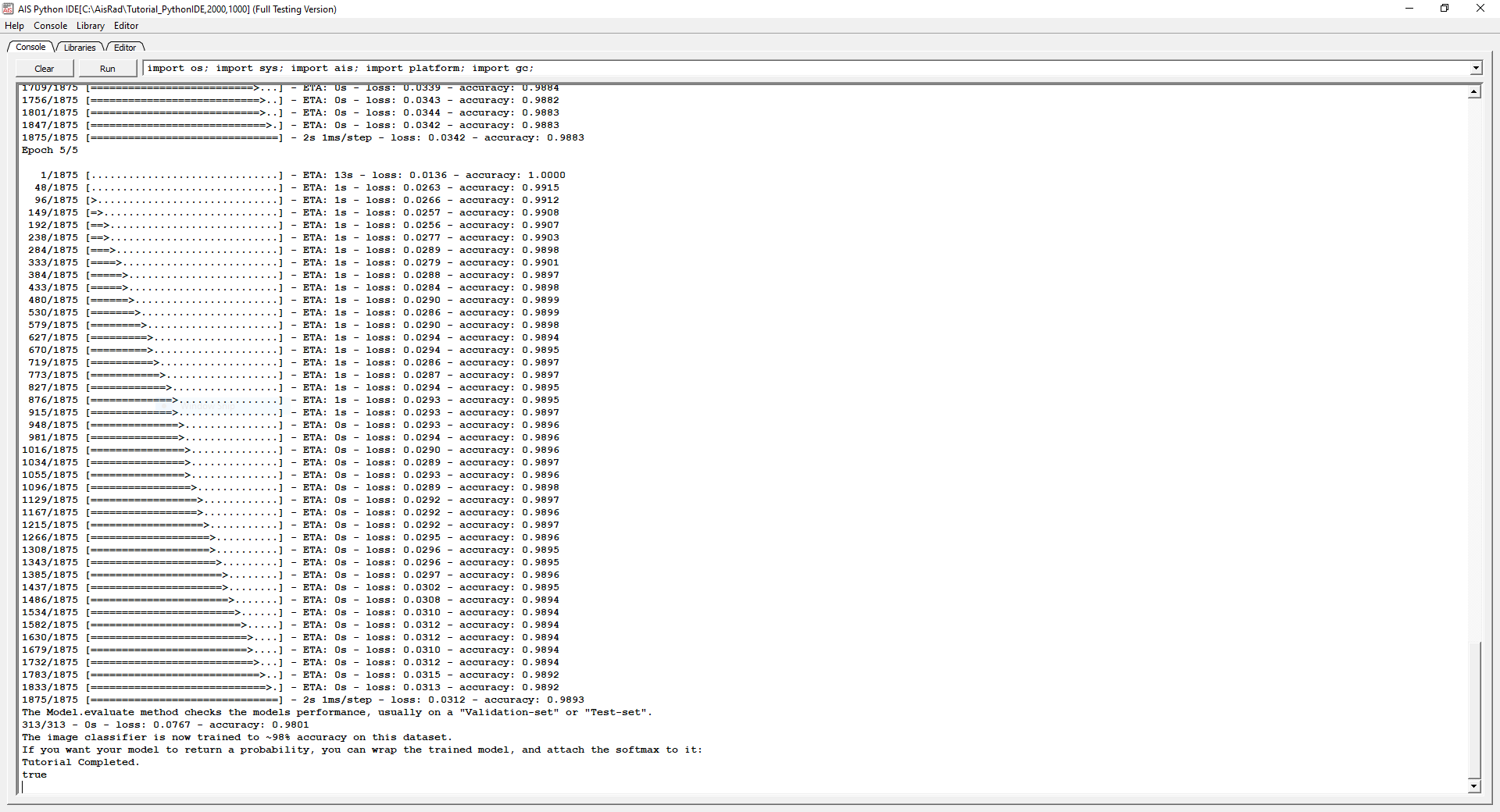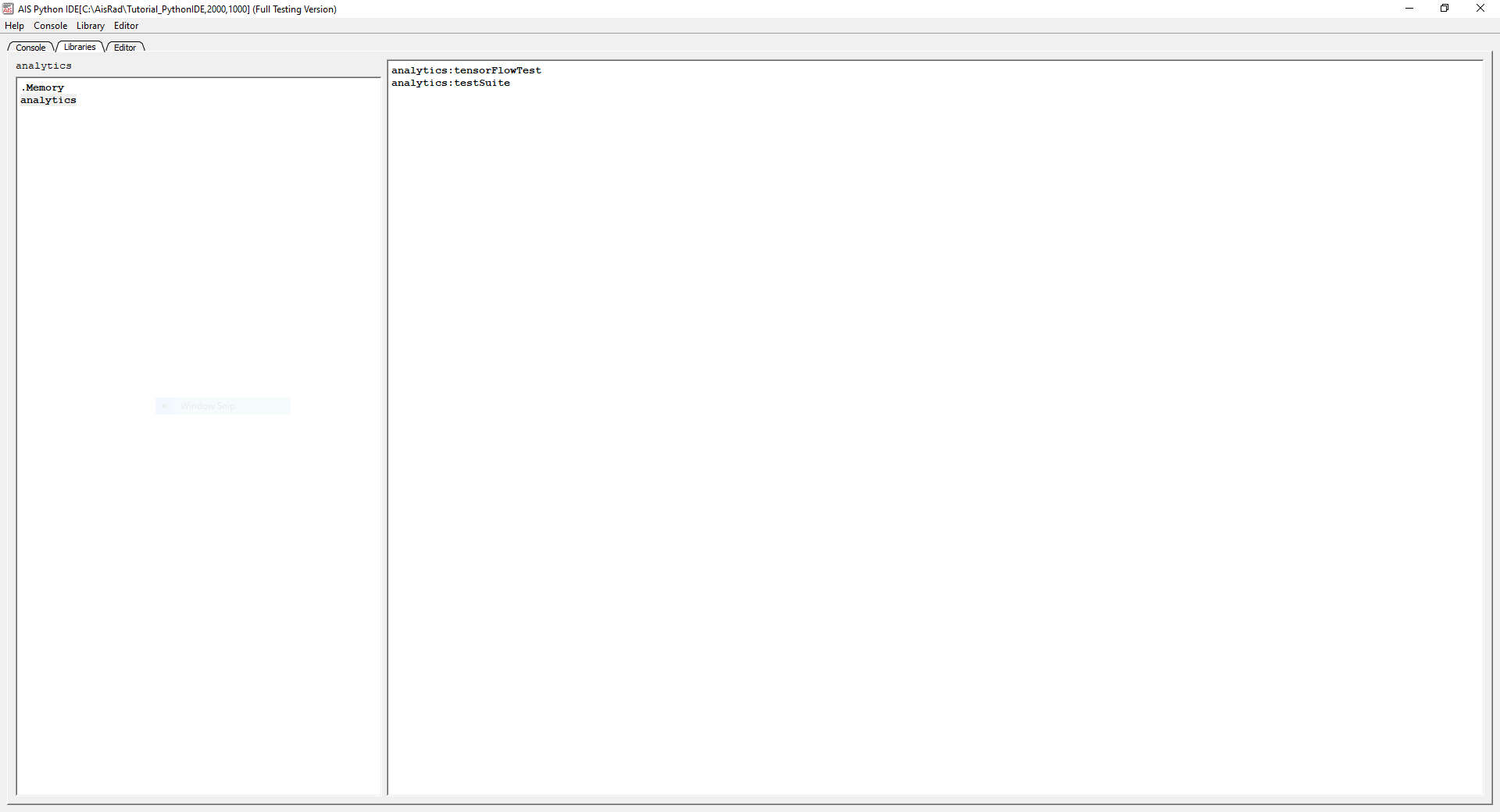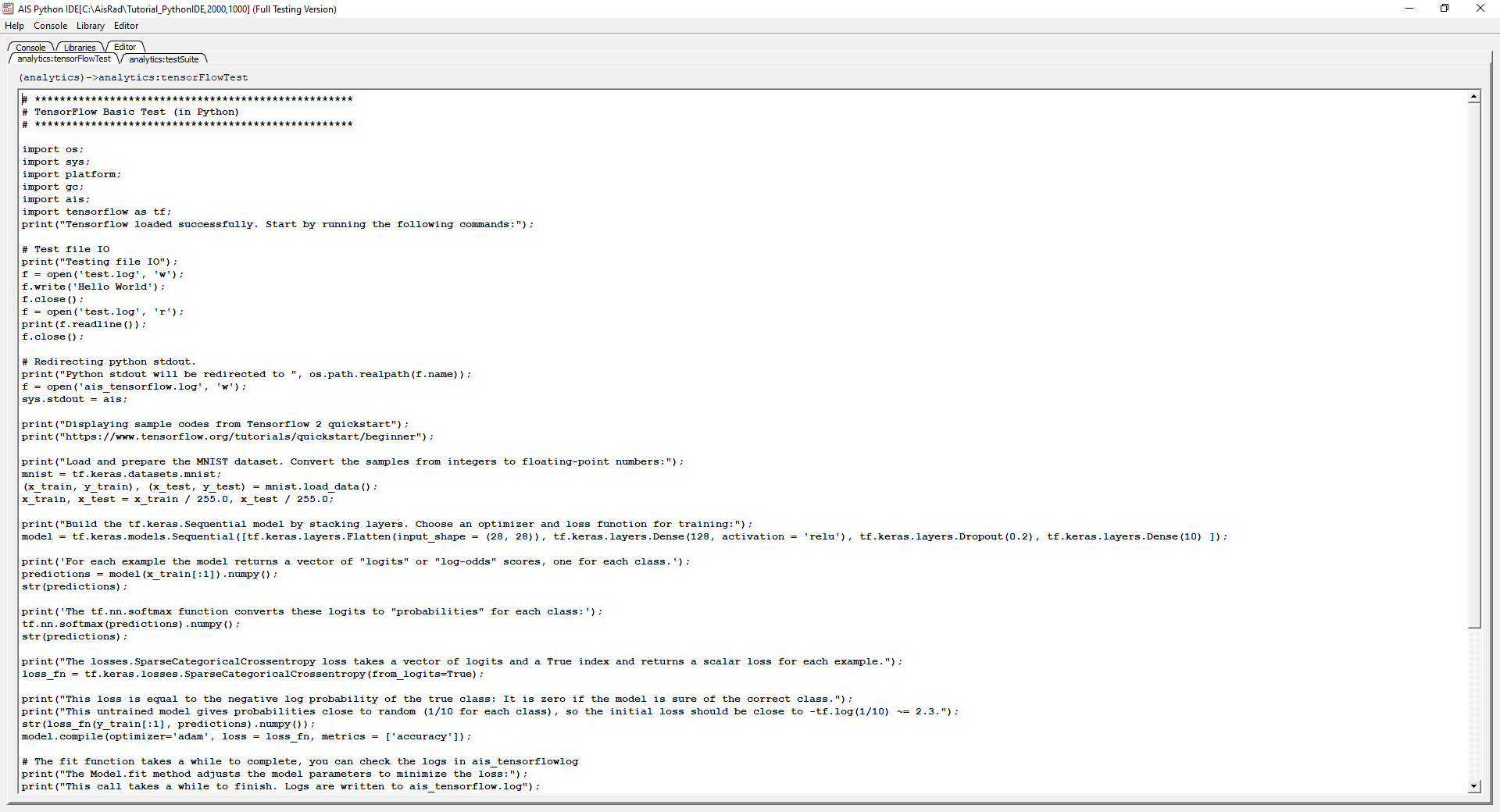Python Language
Introduction
Python is an interpretive scripting language which has become a center for Data Analytics libraries and applications.
The AIS interface to the Python language is designed to give seemless access to Python data analytics libraries and scripts,
and also to allow seamless extension of Python with AIS Lisp lambdas.
Python is an easy to learn, powerful programming language.
It has efficient high-level data structures and a simple but effective approach to object-oriented programming.
Python?s elegant syntax and dynamic typing, together with its interpreted nature, make it an ideal language for scripting and rapid application development in many areas on most platforms.
The Python interpreter and the extensive standard library are freely available in source or binary form for all major platforms from the Python web site,
and may be freely distributed.
The same site also contains distributions of and pointers to many free third party Python modules, programs and tools, and additional documentation.
The Python interpreter is easily extended with new functions and data types implemented in Lisp, C, C++, or other languages callable from C.
Python is also suitable as an extension language for customizable applications.
For a description of standard objects and modules, see The Python Standard Library.
The Python Language Reference gives a more formal definition of the language.
To write extensions in C or C++, read Extending and Embedding the Python Interpreter and Python/C API Reference Manual.
There are also several books covering Python in depth.
Below is a list of pdf documents which provide references and tutorials for studying the Python language.
History
Python has a long history, having been created in the early 1990s by Guido van Rossum at Stichting Mathematisch Centrum (CWI, see https://www.cwi.nl/)
in the Netherlands as a successor of a language called ABC.
Guido remains Python?s principal author, although it includes many contributions from others.
In 1995, Guido continued his work on Python at the Corporation for National Research Initiatives (CNRI, see https://www.cnri.reston.va.us/)
in Reston, Virginia where he released several versions of the software.
In May 2000, Guido and the Python core development team moved to BeOpen.com to form the BeOpen PythonLabs team.
In October of the same year, the PythonLabs team moved to Digital Creations (now Zope Corporation; see https://www.zope.org/).
In 2001, the Python Software Foundation (PSF, see https://www.python.org/psf/) was formed, a non-profit organization created specifically to own Python-related Intellectual Property.
Zope Corporation is a sponsoring member of the PSF.
All Python releases are Open Source (see https://opensource.org/ for the Open Source Definition).
Historically, most, but not all, Python releases have also been GPL-compatible.
AIS is currently interfacing with Python release 3.8 whose full documentation can be found here.
The Python interface is exercised in the Tutorial_Python in the AIS folder.
NumPy
The NumPy Python module is an open-source module for Python that provides common
mathematical and numerical routines in pre-compiled, fast functions.
These are growing into highly mature packages that provide functionality that meets, or perhaps exceeds,
that associated with common commercial software like MatLab.
The NumPy (Numeric Python) package provides basic routines for manipulating large arrays and matrices of numeric data.
Below is a list of pdf documents which provide references and tutorials for studying the NumPy module.
TensorFlow
The TensorFlow Python module TensorFlow is an open source software library for high performance numerical computation.
Its flexible architecture allows easy deployment of computation across a variety of platforms (CPUs, GPUs, TPUs), and from desktops to clusters of servers to mobile and edge devices.
Originally developed by researchers and engineers from the Google Brain team within Google's AI organization,
it comes with strong support for machine learning and deep learning and the flexible numerical computation core is used across many other scientific domains.
Below is a list of pdf documents which provide references and tutorials for studying the TensorFlow module.
The Python IDE
The Tutorial_PythonIDE folder contains a Python Integrated Development Enviornment (IDE).
It is created entirely in Lisp using the QT classes and allows the development and debugging of Python data analytics scripts for use in the research lab.
The AIS Python IDE contains the complete Lisp source code for the Integrated Development Environment for Python.
The IDE contains a stylized QT desk top interface with three tabs: Console, Libraries, and Editor.
The AIS Python IDE and the Lisp code which creates it can be found in the Ais/Tutorial_PythonIDE folder.
Python IDE Console Tab
The Console tab contains the Python console window which displays all Python print( ...) function output as well as logging all console output to the log file.
The console main pane also allows the researcher to enter an execute Python commands.

Python IDE Libraries Tab
The Libraries tab contains the list of libraries referenced by this research project.
Clicking on any one of the libraries, causes the list of data analytic scripts in the selected library to appear in the right hand pane.
Clicking on any data analytic script in the right hand pane causes the script to open an editor window in the Editor Tab.

Python IDE Editor Tab
The Editor tab contains the set of edit windows opened by the researcher.
Each edit window has its own tab and allows the researcher to edit the data analytic scripts of each Library.
Edited library scripts can be saved and run from options in the Edit pull down menu above.



